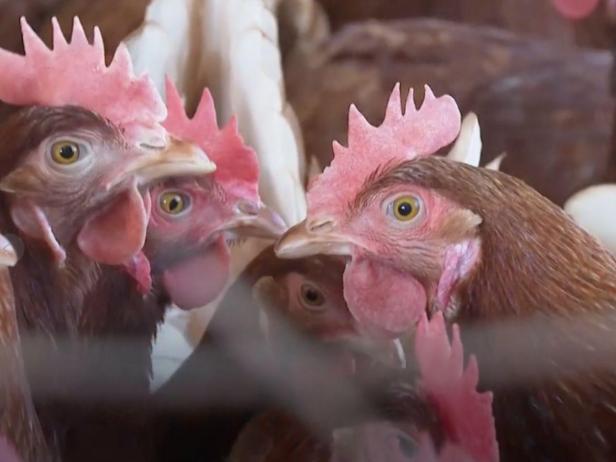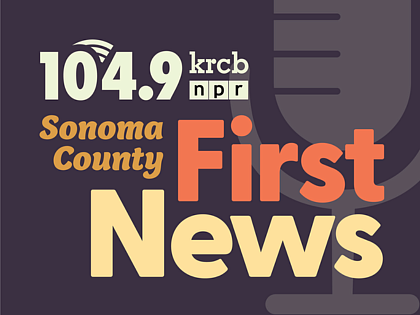 photo credit: Courtesy of AP
photo credit: Courtesy of APIn mid-September, KRCB hosted a debate on Measure J, the current ballot measure that seeks to limit the size of animal farms in Sonoma County. Afterwards, the newsroom set out to look more into various statements made by both sides during the debate.
Greta Mart: Listeners, we’ve thoroughly examined the many aspects of the ballot measure itself and our Measure J debate. In our reporting, we have repeatedly come up against contrasting expert opinions. Facts that are true in one sense but misleading when other parameters are factored in. In a word, it’s complicated, and we found it virtually impossible to fact-check in a straightforward way with the resources at our disposal.
So, as Sonoma County voters make their decision in the final days leading up to the Nov. 5 election, we are presenting a final summary of what we’ve heard in our reporting on Measure J, to help inform our community on this contentious topic.
I’m here with KRCB’s Noah Abrams. Noah, Measure J asks voters….should Sonoma County ban concentrated animal feeding operations, known as CAFOs. Let’s start with the debate’s first question, how do you define a CAFO?
Noah Abrams: Let's listen to what Lewis Bernier with the ‘Yes on J' campaign, and Brent Newell speaking for the ‘No on J' campaign, had to say about the term.
Lewis Bernier: Concentrated animal feeding operation is a definition developed by the EPA to define a facility based on the amount of waste that they produce. So it's basically based on the amount of risk of pollution of a facility, but CAFO, concentrated animal feeding operation, is used almost universally as an interchangeable term with factory farm.
Brent Newell: The thing with the CAFO definition is that it really is not synonymous with the term factory farm...We are not in Duplin County, North Carolina. We're not in Sac County, Iowa and we are not in Tulare County, California...there is a fundamental difference between what's happening in those counties and what Sonoma County is.
Noah Abrams: The ‘Yes on J’ campaign states their goal is to “end factory farming, protect animals, protect public health and protect small farms.”
Webster's Dictionary defines ‘factory farm’ as “a large industrialized farm - especially : a farm on which large numbers of livestock are raised indoors in conditions intended to maximize production at minimal cost.”
Here in Sonoma County, the operations that I think most resemble could fall under the label of ‘factory farming’ are going to be the handful of large poultry rearing and egg laying barns distributed around the county. Those are long squat rows of industrial barns where the chickens live in the thousands, in a very controlled environment.
Factory farm is not a regulatory term though, and Measure J uses CAFO for the regulatory framework—it’s not a 1-for-1 match, but it’s close.
One of the experts I spoke to about CAFOs is Dr. Becca Muenich. She’s a professor of biological and agricultural engineering at the University of Arkansas, who studies CAFO impacts on water quality..
Becca Muenich: The CAFO designation came from the Clean Water Act and is really a kind of way to attribute waste generation because the waste, specifically the manure being the primary waste generated, that's gonna impact water….the designation was really to try and figure out ways to manage or regulate the waste that could be entering waterways from these operations. So, it really had not a lot to do with the way that those operations in general operated other than just the waste management.
Noah Abrams: Muenich points out that as much as the size of an operation matters, how a facility is operated, what practices they adhere to—that's just as important.
Becca Muenich: Understanding the regulatory origin of the term helps in thinking about impacts. Now we have some studies that have shown that small farms can have just as big of an impact as large farms. So I don't think that it's a size designation that necessarily says, is this gonna be more impactful or not?
Greta Mart: I interviewed Dr. Gary Butcher, the official poultry veterinarian for the State of Florida. He goes even further when it comes to farm sizes and animal welfare.
Gary Butcher: This is my area of expertise, and if you're telling me that the way [proponents of Measure J] want to change it to reduce sizes of farms, and they're saying they're doing it for animal welfare, well that's a complete lie. Small farms don't have better animal welfare outcomes than large farms. You can measure that by: do you have higher mortality in large farms versus small farms? Well, a little bit less actually in the large farms. You look at stress hormones in the body, like corticosterone levels, they're actually higher in the small farms than they are in the large farms. You look at broken bones…you look at egg production, that type of thing. The birds do better in these larger farms than they do in the smaller farms.
Noah Abrams: Going back to the debate—-because Measure J uses the regulatory term CAFO, which is broken down further into small, medium, and large as the standard, we tried to pinpoint exactly how many farms or facilities would have to reduce the size of their operations. Here's ‘Yes on J’ speaker Louis Bernier again…
Louis Bernier: There are no medium CAFOs in Sonoma County because they're not allowed to discharge waste in the way that they would be required to be classified a medium CAFO. So that leaves 21 large, concentrated animal feeding operations in Sonoma County.
Noah Abrams: I interviewed Dr. Randi Black, she's a researcher and dairy advisor with the University of California Cooperative Extension. She is also the principal author of the Measure J impact report commissioned by Sonoma County's Board of Supervisors. Black has this to say about that 21 CAFO number…
Randi Black: So my estimate, just based on the information I have, is that we would have 23 facilities that meet the regulations of being a large sized CAFO and would be immediately impacted [should Measure J pass]. And that is from eight dairies that I can confirm. And then that is with the assumption of the 15 poultry operations that were identified by the measures authors, again, not being able to personally prove or disprove that number. So I've come to 23 facilities.
Greta Mart: So why does she have a different number?
Noah Abrams: Black says she counts by the number of distinct businesses, some of which share property lines, and have been grouped together in that list of 21 facilities. She also says there is some uncertainty about that number growing if Measure J passes, for two reasons:
Randi Black:.There are uncertainties in herd and flock sizes. These things change with the season with the demand of different food products and then actually even with feed costs. So you'll see a lot of herd and flock sizes fluctuate just based on feed prices. I think the other reason, which maybe a lot of our farm industry is more concerned with, is the ambiguity in the language of the measure. And it's particularly regarding one phrase that says that it's designated as a CAFO by the permitting authority due to being a significant contributor of pollutants. And while the measure is written using EPA language, it does not set the EPA or the [California state or regional] water board as the regulating authority.
Greta Mart: Thanks, Noah, we’ll be looking at statements made about the possible economic and public health impacts of Measure J later this week.

 Live Radio
Live Radio




